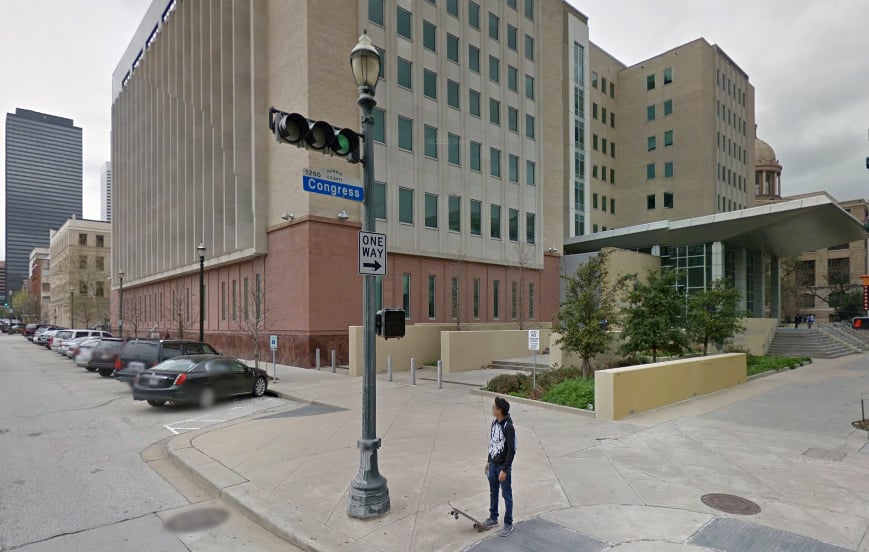
More Girls Locked Up Longer in Texas’ Juvenile Justice System


Boys account for the vast majority of the juvenile justice system’s population, and generally speaking, they’re the ones the system is built to handle. Texas has just one secure lockup for girls, the Ron Jackson State Juvenile Correctional Complex in Brownwood, and the state’s patchwork of county juvenile probation departments and treatment facilities receives about one girl for every nine boys.
But that gender balance is shifting. Nationwide, girls are entering the system at a higher rate than before, even though overall youth delinquency has gone down over the last 20 years. A new study suggests that once they’re in the system, girls remain locked up for much longer than boys.
That’s according to work co-authored by University of Texas at Austin researcher Erin Espinosa and published in the latest issue of Criminal Justice and Behavior. Espinosa, a former youth probation officer who now works at the university’s Texas Institute for Excellence in Mental Health, analyzed data on more than 5,000 youths over a two-year period. The data came from three urban Texas counties — according to the terms of UT-Austin’s research agreement, those counties aren’t named — that accounted for just over half the population of the statewide system.
The researchers considered only county-run secure lockups and residential treatment centers. The data does not include Ron Jackson, the only state-run secure facility for girls in Texas, which has a population of around 100 on any given day. Texas has moved away from large, remote state-run juvenile lockups in recent years, so the vast majority of youth in the system are handled by county probation departments like those in Espinosa’s study.
Espinosa, along with co-author Jon Sorenson of East Carolina University, found that girls were kept away from their homes, locked up by the county or sent to residential treatment facilities for “significantly longer” than boys. And before their cases are even heard, girls are locked up for an average of five days more than boys. Girls with a history of trauma, they found, were especially likely to be locked up far longer than boys for violating probation.
“Girls are just harder for the system to respond to,” Espinosa told the Observer. “When they act out, they act out differently than boys.” Espinosa said it’ll take more research to completely understand why the juvenile system is holding on to girls so much longer than boys, but it’s easy to see how a girl who finds herself in the juvenile justice system can quickly dig herself deeper in. “The coping mechanisms that they use are termed ‘delinquent behavior,’” Espinosa said. Girls trying to escape an abusive home, for instance, are often arrested as runaways and funneled into a system where adults have no idea how to address their trauma.
Outside, girls have at least some choice in how they cope with threats — “fight, flight or freeze,” Espinosa said. Inside, though, flight isn’t an option and freezing up can appear insubordinate. That just leaves fighting.
Those longer sentences are worse than just unfair. Past research on girls in the juvenile justice system suggests that girls with a history of trauma are stressed even further by their life in confinement, where what little control they once had over their lives is whittled down even further. Locked up, they may find there’s no escape from other aggressive girls or from confrontational officers.
Fixing the juvenile system, in other words, will mean reaching youth before they even get there.
In 2013, Espinosa found that having a history of trauma increased a girl’s likelihood of winding up, in her words, “funneled deeper into the system,” to a higher-security setting. Espinoza’s latest work shows that the system also tends to hold onto them longer once they’re in.
Her data also shows that girls are kept locked up for longer at the beginning of the process as well. A phenomenon known as “bootstrapping,” in which minor offenses like contempt of court or violating a court order snowball to keep a youth locked up even longer, potentially even before they make it to court, may be at work here. Bootstrapping tends to have a greater effect on girls than boys, according to past research.
Since the purpose of the juvenile justice system is ostensibly to treat children, to prepare them to succeed in life and stay out of the system as adults, Espinosa said her latest study signals the need for a new approach, one built for youth with a history of trauma.
“A trauma-informed juvenile justice system would include judges, juvenile corrections staff and juvenile probation officers who are knowledgeable of the impact of trauma and have the skills and resources to appropriately respond to the associated behaviors,” the study says.
“It’s a new idea,” Espinosa said. “A lot of people are trying to figure out the definition of what a trauma-based system is.” (It’s a key question for folks involved in redesigning Texas’ foster care system, too.) She said that a new system would require change not only in juvenile courts and treatment facilities, but also from police and in schools, too. If a child is running away, she said, the system needs to be prepared to understand why.
A trauma-based system that connects girls with the treatment they need is one that intervenes before they’re brought before a judge, Espinosa said. “Before they end up incarcerated, are we looking at where they are? How can we look at responding to the kid at their level?” she wondered.
Fixing the juvenile system, in other words, will mean reaching youth before they even get there.


